The Expanded Canon: Perspectives on Mormonism and Sacred Texts
$23.35
edited by Blair G. Van Dyke, Brian D. Birch, and Boyd J. Petersen
- “Excellent scholarship and insights into Latter-day Saint scripture.” — BYU Studies Quarterly
- “Another solid addition to Greg Kofford Books’ already impressive output.” — Times and Seasons
- “Every single essay in this collection is top-notch.” — Wheat & Tares



Available in ebook for Kindle, Nook, Kobo, Google Play, and Apple.
Also available through Amazon and Deseret Book.
Part of the UVU Comparative Mormon Studies series.
Download a free sample preview.
Book Description:
Among the most distinctive and defining features of Mormonism is the affirmation of continuing revelation through modern day prophets and apostles. An important component of this concept is the acknowledgment of an open canon—that the body of authoritative scriptural texts can expand as new revelations are made available and presented to the membership for ratification.
This volume brings together both Mormon and non-Mormon scholars to examine the place, purpose, and meaning of the LDS Standard Works (Christian Bible, Book of Mormon, Doctrine and Covenants, and Pearl of Great Price) in the Mormon tradition, as well as the extra-canonical sources that play a near-scriptural role in the lives of believers. Approaching LDS scripture from a variety of disciplines, methodologies, and perspectives, these scholars offer new insights into both the historical and contemporary understandings of Mormon continuing revelation.
AuthorCast interview with the Editors:
Comprehensive Table of Contents:
.
Introduction- Van Dyke, Birch, and Petersen, volume editors
1. The Triangle and the Sovereign: Logics, Histories, and an Open Canon
- David Frank Holland
2. Beyond the Canon: Authoritative Discourse in Comparative Perspective
- Brian D. Birch
3. On the Literal Interpretation of Scripture
- James E. Faulconer
4. Reading Women Back into the Scriptures
- Claudia L. Bushman
5. The Book of Mormon as Post-Canonical Scripture
- Grant Hardy
6. Reading from the Gold Plates
- Richard Lyman Bushman
7. History and the Claims of Revelation: Joseph Smith and the Materialization of the Golden Plates
- Ann Taves
8. "The Book Which Thou Shalt Write": The Book of Moses as Prophetic Midrash
- David Bokovoy
9. The Ascendancy and Legitimation of the Pearl of Great Price
- Brian M. Hauglid
10. Pivotal Publishing Moments for the Book of Mormon
- Paul C. Gutjahr
11. Relishing the Revisions: The Doctrine & Covenants and the Revelatory Process
- Grant Underwood
12. Spiritualizing Electronic Scripture in Mormonism
- Blair G. Van Dyke
13. The Art of Scripture and Scripture as Art: The Proclamation on the Family and the Expanding Canon
- Boyd J. Petersen and David W. Scott
14. Patriarchal Blessings in the Prophetic Development of Early Mormonism
- Gordon Shepherd And Gary Shepherd
Q&A with the Editors:
Part One
.
Q: How is the Mormon Studies program at Utah Valley University distinguished from Mormon Studies programs that have emerged at other universities?
A: The Mormon Studies program at UVU is distinguished by the comparative components of the work we do. At UVU we cast a broad net across the academy knowing that there are relevant points of exploration at the intersections of Mormonism and the arts, Mormonism and the sciences, Mormonism and literature, Mormonism and economics, Mormonism and feminism, Mormonism and world religions, and so forth. Additionally, the program is distinguished from other Mormon Studies by the academic events that we host. UVU initiated and maintains the most vibrant tradition of creating and hosting relevant and engaging conferences, symposia, and intra-campus events than any other program in the country. Further, a university-wide initiative is in place to engage the community in the work of the academy. Hence, the events held on campus are focused first and foremost for students but inviting the community to enjoy our work is very important. This facilitates understanding and builds bridges between scholars of Mormon Studies and Mormons and non-Mormons outside academic orbits.
Q: Where did the material for The Expanded Canon come from?
A: The material that constitutes volume one of the UVU Comparative Mormon Studies Series came from an annual Mormon Studies Conference that shares the title of the volume. We drew from the work of some of the scholars that presented at that conference to give their work and ours a broader audience. Generally, the contributors to the volume are not household names or prominent authors that regularly publish in the common commercial publishing houses directed at Mormon readership. As such, this volume introduces that audience to prominent personalities in the field of Mormon Studies. It is not uncommon for scholars in this field of study to look for venues where their work can reach a broader readership. This jointly published volume accomplishes that desire in a thoughtful way.
Q: What are a few key points about this volume that would be of interest to readers?
A: Few things are more central to Mormon thought than the way the tradition approaches scripture. And many of their most closely held beliefs fly in the face of general Christianity’s conception of scriptural texts. An open or expanded canon of scripture is one example. Grant Underwood explores Joseph Smith’s revelatory capacities and illustrates that Smith consistently edited his revelations and felt that his revisions were done under the same Spirit by which the initial revelation was received. Hence, the revisions may be situated in the canon with the same gravitas that the original text enjoyed. Claudia Bushman directly addresses the lack of female voices in Mormon scripture. She recommends several key documents crafted by women in the spirit of revelation. Ultimately, she suggests several candidates for inclusion. As the Mormon canon expands it should include female voices. From a non-Mormon perspective, Ann Taves does not embrace a historical explanation of the Book of Mormon or the gold plates. However, she does not deny Joseph Smith as a religious genius and compelling creator of a dynamic mythos. In her chapter she uses Mormon scripture to suggest a way that the golden plates exist, are not historical, but still maintain divine connectivity. David Holland examines the boundaries and intricacies of the Mormon canon. Historically, what are the patterns and intricacies of the expanding canon and what is the inherent logic behind the related processes? Additionally, authors treat the status of the Pearl of Great Price, the historical milieu of the publication of the Book of Mormon, and the place of The Family A Proclamation to the World. These are just a few of the important issues addressed in this volume.
Q: What is your thought process behind curating these volumes in terms of representation from both LDS and non-LDS scholars, gender, race, academic disciplines, etc?
A: Mormon Studies programing at UVU has always been centered on solid scholarship while simultaneously broadening tents of inclusivity. To date, we have invited guests that span spectrums of thought related to Mormonism. From Orthodox Judaism to Secular Humanists; from LGBTQ to opponents to same-sex marriage; from Feminists to staunch advocates of male hierarchies, all have had a voice in the UVU Mormon Studies Program. Each course, conference, and publication treating these dynamic dialogues in Mormonism are conducted in civility and the scholarly anchors of the academy. Given our disciplinary grounding, our work has expanded the conversation and opened a wide variety of ongoing cooperation between schools of thought that intersect with Mormon thought.
Part Two
.
Q: When and how did the Mormon Studies program at UVU launch?
A: The UVU Mormon Studies Program began in 2000 with the arrival of Eugene England. Gene received a grant from the National Endowment for the Humanities to explore how Mormon Studies could succeed at a state university. A year-long seminar resulted that included a stellar lineup of consultants and guest scholars. From that point forward, the Religious Studies Program has developed multiple courses complemented by our annual Mormon Studies Conference and Eugene England Lecture—to honor Gene’s tragic and untimely passing in 2001. The program also hosts and facilitates events for independent organizations and publications including the Society for Mormon Philosophy and Theology, the Dialogue Foundation, the Interpreter Foundation, Mormon Scholars in the Humanities, Association for Mormon Letters, and others.
Q: How is the UVU Mormon Studies program distinguished from Mormon Studies programs that have emerged at other campuses?
A: Mormon Studies at UVU is distinguished by the explicitly comparative focus of our work. Given the strengths of our faculty, we have emphasized courses and programming that addresses engagement and dialogue across cultures, faith traditions, and theological perspectives. Permanent course offerings include Mormon Cultural Studies, Mormon Theology and the Christian Tradition, Mormon Anthropology, and Mormon Literature. Our strengths lie in areas other than Mormon history, which is well represented at other institutions—and appropriately so. Given the nature of our institution, our events are focused first and foremost on student learning, but all our events are free and open to the public and we welcome conversation between scholars and nonprofessionals.
Q: How long has the annual UVU Mormon Studies Conference been held, and what have been some of the topics of past conferences?
A: As mentioned above, the Mormon Studies Conference was first convened by Eugene England in 2000, and to date we have convened a total of nineteen conferences. Topics have ranged across a variety of issues including “Islam and Mormonism,” “Mormonism in the Public Mind,” “Mormonism and the Art of Boundary Maintenance,” “Mormonism and the Internet,” etc. We have been fortunate to host superb scholars and to bring them into conversation with each other and the broader public.
Q: Where did the material for the first volume, The Expanded Canon, come from?
A: The material in The Expanded Canon emerged came from our 2013 Mormon Studies Conference that shares the title of the volume. We drew from the work of conference presenters and added select essays to round out the collection. The volume is expressive of our broader approach to bring diverse scholars into conversation and to show a variety of perspectives and methodologies.
Q: What are a few key points about this volume that would be of interest to readers?
A: Few things are more central to Mormon thought than the way the tradition approaches scripture. And many of their most closely held beliefs fly in the face of general Christianity’s conception of scriptural texts. An open or expanded canon of scripture is one example. Grant Underwood explores Joseph Smith’s revelatory capacities and illustrates that Smith consistently edited his revelations and felt that his revisions were done under the same Spirit by which the initial revelation was received. Hence, the revisions may be situated in the canon with the same gravitas that the original text enjoyed. Claudia Bushman directly addresses the lack of female voices in Mormon scripture. She recommends several key documents crafted by women in the spirit of revelation. Ultimately, she suggests several candidates for inclusion. As the Mormon canon expands it should include female voices. From a non-Mormon perspective, Ann Taves does not embrace a historical explanation of the Book of Mormon or the gold plates. However, she does not deny Joseph Smith as a religious genius and compelling creator of a dynamic mythos. In her chapter she uses Mormon scripture to suggest a way that the golden plates exist, are not historical, but still maintain divine connectivity. David Holland examines the boundaries and intricacies of the Mormon canon. Historically, what are the patterns and intricacies of the expanding canon and what is the inherent logic behind the related processes? Additionally, authors treat the status of the Pearl of Great Price, the historical milieu of the publication of the Book of Mormon, and the place of The Family: A Proclamation to the World. These are just a few of the important issues addressed in this volume.
Q: What is your thought process behind curating these volumes in terms of representation from both LDS and non-LDS scholars, gender, race, academic disciplines, etc?
A: Mormon Studies programing at UVU has always been centered on strong scholarship while also extending our reach to marginalized voices. To date, we have invited guests that span a broad spectrum of Mormon thought and practice. From Orthodox Judaism to Secular Humanists; from LGBTQ to opponents to same-sex marriage; from Feminists to staunch advocates of male hierarchies, all have had a voice in the UVU Mormon Studies Program. Each course, conference, and publication treating these dynamic dialogues in Mormonism are conducted in civility and the scholarly anchors of the academy. Given our disciplinary grounding, our work has expanded the conversation and opened a wide variety of ongoing cooperation between schools of thought that intersect with Mormon thought.
Q: What can readers expect to see coming from the UVU Comparative Mormon Studies series?
A: Our 2019 conference will be centered on the experience of women in and around the Mormon traditions. We have witnessed tremendous scholarship of late in this area and are anxious to assemble key authors and advocates. Other areas we plan to explore include comparative studies in Mormonism and Asian religions, theological approaches to religious diversity, and questions of Mormon identity.
Praise for The Expanded Canon:
“As a Mormon scholar I consider myself primarily a scripturist, so this collection was right up my alley. I just this moment finished it. And I thoroughly enjoyed the collection. I found the contributions to be thoughtful and engaging and in many cases to go down alleys that I had not previously thought to explore. . . . This is not same old same old stuff, but essays viewing LDS scripture through new and imaginative lenses. Go forth, purchase, and read!” — Kevin Barney, By Common Consent
“You’ll learn to appreciate the Book of Mormon, Pearl of Great Price, Doctrine and Covenants, and other proclamations, as you see how the 'translation' process is followed by efforts to make better the revelations that came from the Spirit, often not as words, but as pure heart felt meaning. . . . I have no doubt that as this series continues, it will become a classic set for families to read and discuss, helping them to better understand the gospel and how it interacts with the world and their daily lives as Latter-day Saints.” — The Millennial Star
“This volume is the first in a collaboration between Kofford Books and UVU, which will serve an important service for the field by reproducing some of the more provocative and smart proceedings in Mormon studies today. . . . there are some very thoughtful and important chapters in this volume. Mormonism’s 'canon' will long vex outside observers, but hopefully these authors can help supply some answers.” — Benjamin E. Park, author of American Nationalisms: Imagining Union in the Age of Revolutions, 1783-1833
“The essays in this volume draw on the texts, practices, and history of Mormonism in order to peel back the layers of divine-human interactions. Doing so can be uncomfortable, but also enlightening. For scholars, this book will provide significant details related to Mormon history and textual criticism. For believers, it will provide insights into the meaning and making of scripture as well as the process of revelation. All in all, The Expanded Canon is another solid addition to Greg Kofford Books’ already impressive output.” — Walker Wright, Times and Seasons
“Every single essay in this collection is top-notch.” — David Banack, Wheat & Tares
“Examines how the doctrine of an ‘open canon’ in the church affects the belief system of members and leaders of the faith . . . the discussions are ‘food for thought.’” — Mike Whitmer, Deseret News
“If you are looking for excellent scholarship and insights into Latter-day Saint scripture, you might want to start with this new compilation from Greg Kofford Books. The authors of the fourteen essays in this volume explore a wide range of topics related to the Latter-day Saint canon and offer a surprisingly consistent level of discourse. Usually anthologies include a few weak links, but that is not the case with this volume.” — Roger Terry, BYU Studies Quarterly
About the Editors:
 Blair G. Van Dyke is an independent scholar and teaches philosophy and religious studies at Utah Valley University. He is a Senior Research Fellow at the Foundation For Religious Diplomacy and is the Custodian of the Mormon Chapter of the Foundation. He holds a Doctorate in the philosophy of education from Brigham Young University. Van Dyke is the co-author of Holy Lands, A History of the Latter-day Saints in the Near East and co-editor of Perspective on Mormon Theology: Apologetics.
Blair G. Van Dyke is an independent scholar and teaches philosophy and religious studies at Utah Valley University. He is a Senior Research Fellow at the Foundation For Religious Diplomacy and is the Custodian of the Mormon Chapter of the Foundation. He holds a Doctorate in the philosophy of education from Brigham Young University. Van Dyke is the co-author of Holy Lands, A History of the Latter-day Saints in the Near East and co-editor of Perspective on Mormon Theology: Apologetics.
 Brian D. Birch received a PhD in philosophy of religion and theology from Claremont Graduate University and is Director of the Religious Studies Program and the Center for the Study of Ethics at Utah Valley University. His areas of specialization include philosophy of religion, ethics, and interreligious studies. He is the founding editor of Element: The Journal of the Society for Mormon Philosophy & Theology and series co-editor of Perspectives on Mormon Theology.
Brian D. Birch received a PhD in philosophy of religion and theology from Claremont Graduate University and is Director of the Religious Studies Program and the Center for the Study of Ethics at Utah Valley University. His areas of specialization include philosophy of religion, ethics, and interreligious studies. He is the founding editor of Element: The Journal of the Society for Mormon Philosophy & Theology and series co-editor of Perspectives on Mormon Theology.
 Boyd Jay Petersen teaches English and religious studies at Utah Valley University. He is the author of Hugh Nibley: A Consecrated Life. and Dead Wood and Rushing Water: Essays on Mormon Faith, Culture, and Family. He currently serves as both the editor for Dialogue: A Journal of Mormon Thought and the program coordinator for Mormon Studies at UVU.
Boyd Jay Petersen teaches English and religious studies at Utah Valley University. He is the author of Hugh Nibley: A Consecrated Life. and Dead Wood and Rushing Water: Essays on Mormon Faith, Culture, and Family. He currently serves as both the editor for Dialogue: A Journal of Mormon Thought and the program coordinator for Mormon Studies at UVU.
More Information:
276 pages
ISBN: 978-1-58958-637-6 (hardcover); 978-1-58958-638-3 (paperback)
Published September 2018
Related products
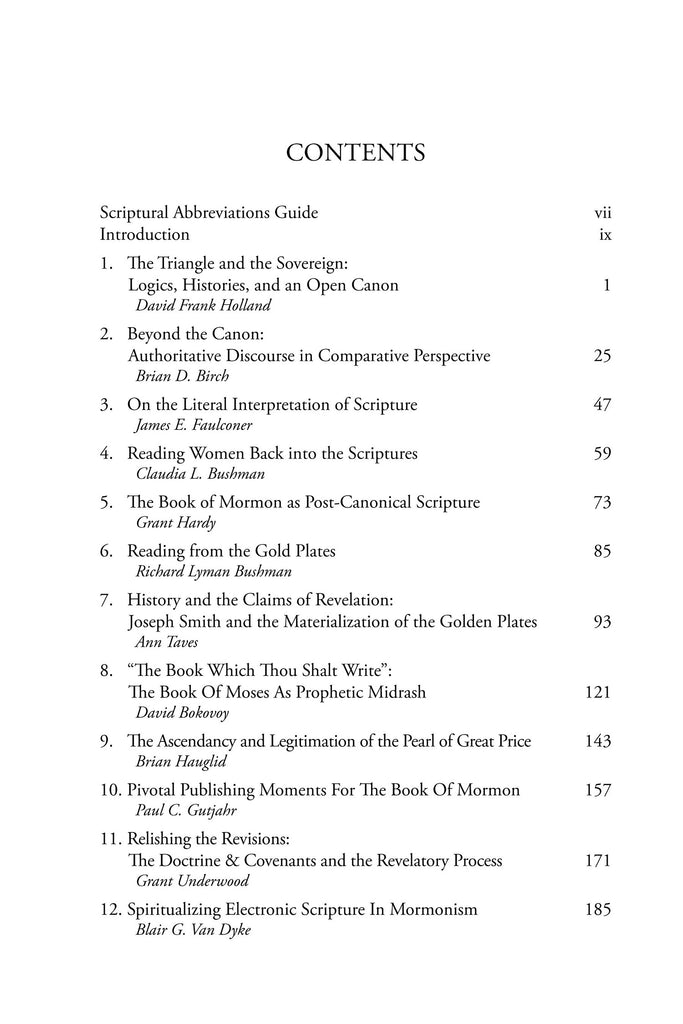
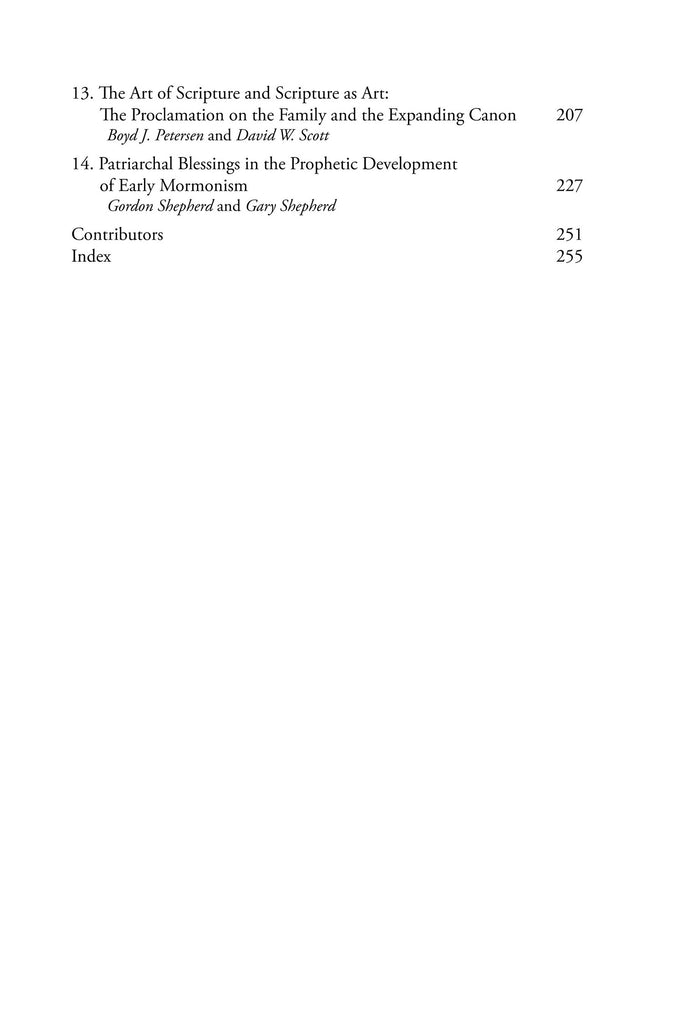





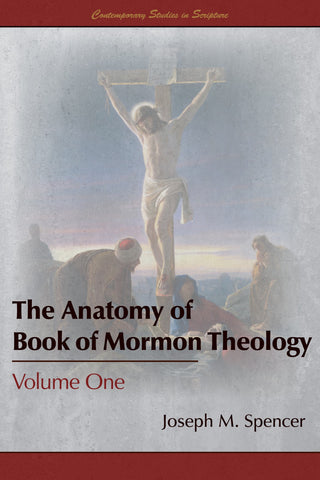
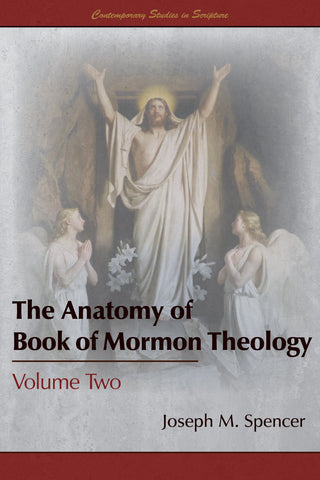
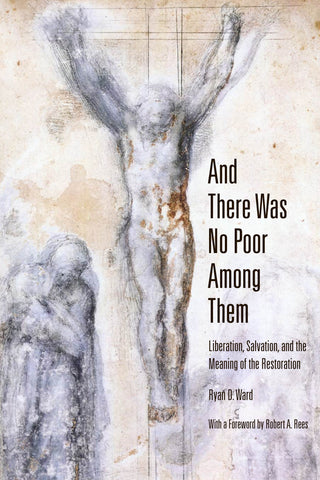
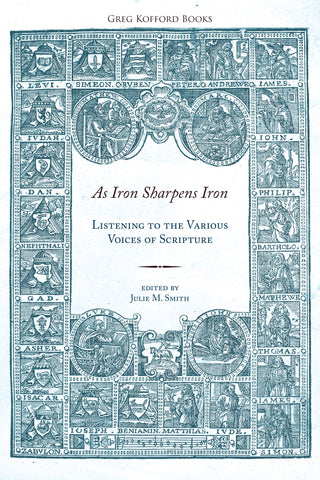
Share this item: